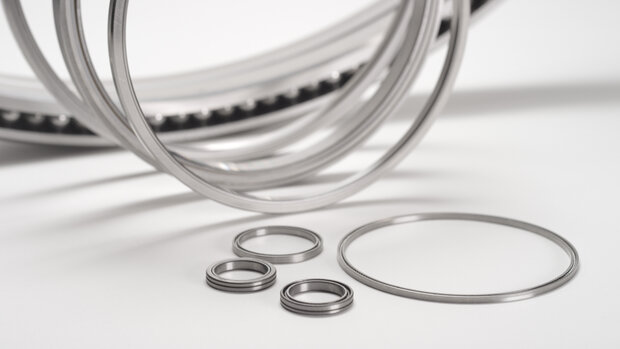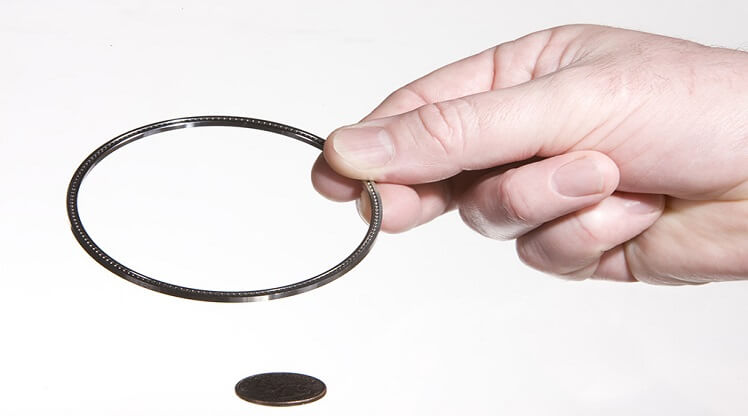News Center
What sets thin-section bearings apart from standard bearings?
2024-08-23
What sets thin-section bearings apart from standard bearings?
Thin-section bearings and standard bearings serve the same fundamental purpose—to enable smooth rotational motion while managing loads—but they differ significantly in design, application, and performance characteristics. So, what exactly sets them apart?

Design and Structure:
- Cross-Section: A primary distinction lies in the cross-section. In standard ball bearings, the cross-section changes proportionally with the bore size. However, thin-section ball bearings maintain a consistent cross-section, irrespective of bore size variations. This means that even with larger bore sizes, the cross-section remains the same, giving them a noticeably thinner appearance.
- Wall Thickness: As the name suggests, thin-section bearings have thinner inner and outer ring walls compared to standard bearings. This design contributes to their reduced weight and compact structure.
- Size and Weight: Thin-section bearings are lighter due to their thin wall thickness, which helps to reduce the overall weight of mechanical equipment and reduce energy consumption.
Performance and Application:
- Space and Weight Considerations: Thin-section bearings are optimal where space is limited or weight is a critical design factor. They are often used in applications like gimbal platforms in naval vessels and military aircraft.
- Precision and Rigidity: Thin-section bearings are manufactured to strict tolerances, ensuring excellent precision and rigidity. This characteristic is vital in precision machinery, medical equipment, and measurement instruments.
- Friction and Efficiency: Thin-section bearings are designed to minimize friction and energy loss, resulting in improved efficiency. This makes them suitable for applications where high performance and energy efficiency are essential, such as industrial machinery and conveyor systems.
- Load Capacity: Despite their thin walls, thin-section bearings can still maintain high strength and rigidity, offering a high load capacity due to the use of high-strength materials and precision processing technology.
- Dynamic Balance: The design of thin-section bearings facilitates good dynamic balance, which can reduce vibration and noise.

Types and Features:
- Versatility: The thin-section bearing family includes a variety of types, each with unique design and application advantages.
- Reali-Slim Bearings: Reali-Slim bearings are one of the most widely used thin section bearings and are designed to provide high precision and high efficiency performance. The main features of Reali-Slim bearings include reduced weight, space saving, reduced friction, increased design flexibility and excellent running accuracy.
In summary, thin-section bearings distinguish themselves through their lightweight design, consistent cross-section, and suitability for space-constrained applications requiring precision. While standard bearings offer robustness for general industrial use, thin-section bearings provide specialized performance in scenarios demanding minimal weight and compact dimensions.
Welcome to contact us if you have any request about DSYC bearings!